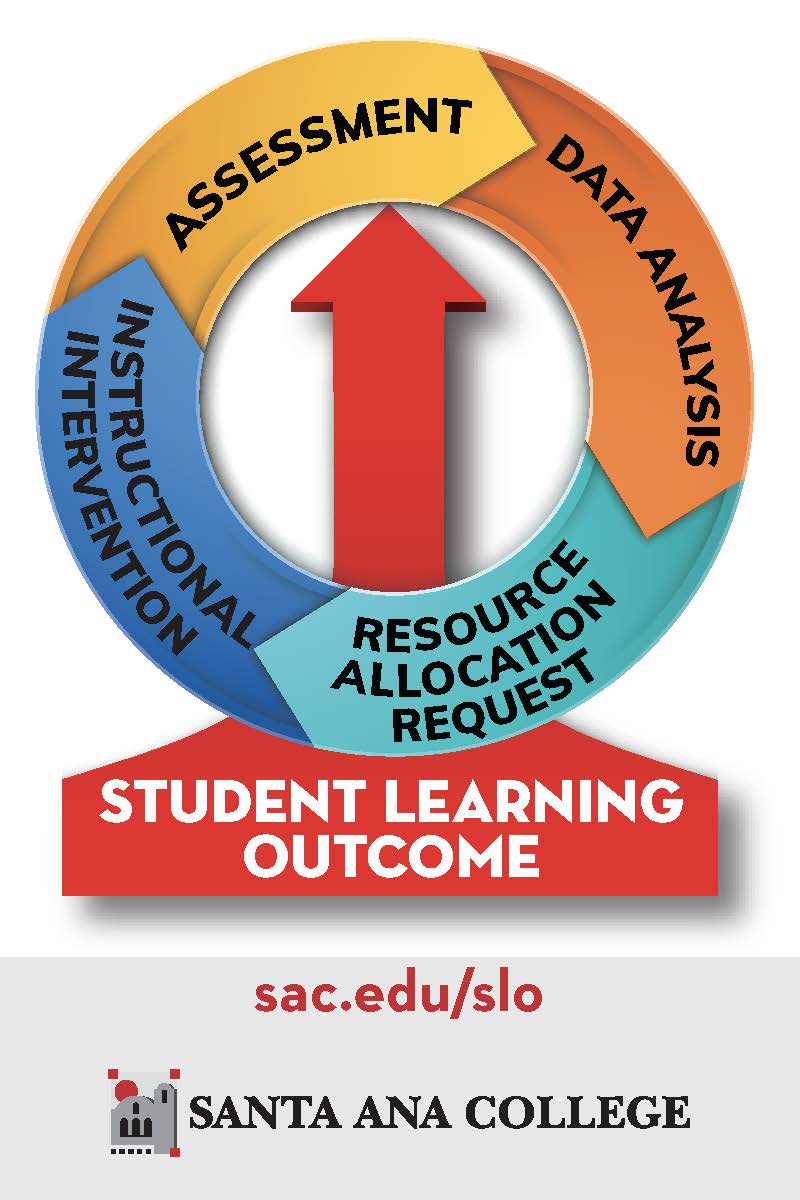Student Learning Outcomes (SLOs) are the specific observable or measurable results that are expected subsequent to a learning experience. These outcomes may involve knowledge (cognitive), skills (behavioral), or attitudes (affective) that provide evidence that learning has occurred as a result of a specified course, program activity, or process. An SLO refers to an overarching outcome for a course, program, degree or certificate, or student services area (such as the library). SLOs describe a student's ability to synthesize various skills using higher level thinking skills and to produce something that asks them to apply what they've learned. SLOs usually encompass a gathering together of smaller discrete objectives (see definition above) through analysis, evaluation and synthesis into more sophisticated skills and abilities.
Course Learning Outcomes (CLOs) comprise the measurable evidence of student learning that occurs as a result of taking classes Santa Ana College. The CLOs for any given course are expected to be attained when students are successful, and they are the skills, competencies, or ideas that faculty want students to comprehend and utilize during and after their learning experience.
Program Learning Outcomes (PLOs) comprise the measurable evidence of student learning that occurs as a result of undertaking a program, i.e., the set of courses a student must take to meet their ultimate goal, at Santa Ana College. The PLOs for any given program are expected to be attained when students are successful. The PLOs thus, express the skillsets and competencies, or ideas that students are expected to obtain as a consequence of their learning experience in their chosen program.

Frequently Asked Questions About SLOs:
1. What is the purpose of Student Learning Outcomes (SLO) assessment?
The purpose of SLO assessment is to improve teaching and learning.
Grades are inclusive of everything that happens in the course. SLO assessment focuses on specific skills and competencies that students acquire during a course.
3. What is the difference between outcomes and objectives?
Objectives are smaller steps that must be acquired leading to a larger, overarching outcome.
4. How many SLOs do I need in a course?
Faculty as subjects experts, determine the number of competencies that students are expected to master in a course. Otherwise, there is no set number.
5. What should happen with SLO assessment data?
6. How are SLOs assessed?
SLO assignment data needs to be analyzed by individual faculty, programs, and departments to identify gaps in student performance.
There are many different methods and tools used for assessment of student learning. It is the faculty decision how to go about the assessment process.
7. How often do faculty need to assess SLOs?
As often as faculty deem necessary. The purpose of SLO assessment is to generate meaningful data for improvement of teaching and learning.
8. What are the standards that govern SLO design and assessment?
Standards for SLO design and assessment are locally determined by faculty who are the subject matter experts.
